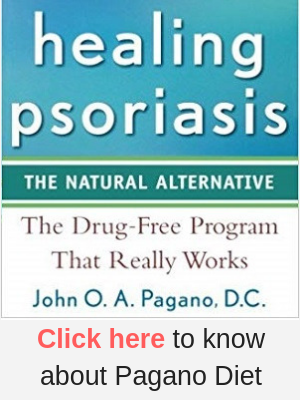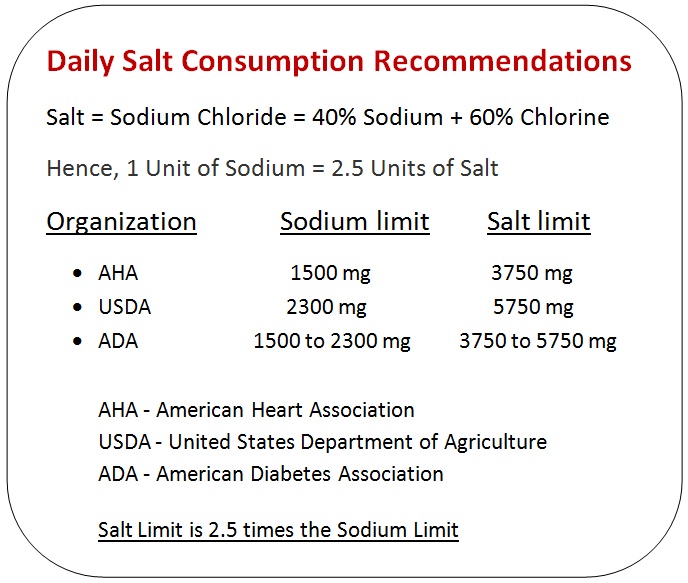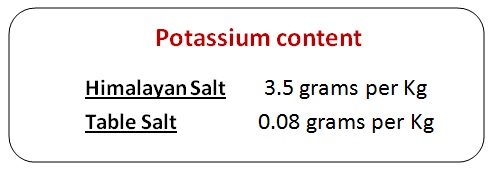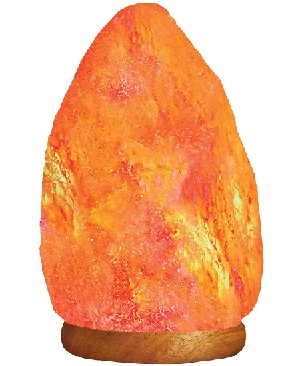In my earlier days of psoriasis diagnosis, I tried a reputed Ayurveda doctor. Along with other medicines, he advised me to consume Himalayan Pink salt for psoriasis healing. He was of the opinion that psoriasis is a skin allergy and table salt (iodized salt) is not good to consume. Although the Ayurveda medicines didn’t help me much in the long run and I discontinued them after a trial of few months, I continued with the Himalayan salt for dietary consumption because it is boasted to have a lot of health benefits against table salt which has a bad reputation.
In this post, we would discuss about a few things in a fairly detailed manner:
- Why the excessive salt consumption is bad for us
- What is Table salt and why it has a bad reputation
- What is Himalayan Pink salt and how logical are the health claims associated with it
Excessive salt consumption and Psoriasis
We all have heard multiple times that for a healthy heart- eat a low-fat diet with less salt and do regular exercise. Recent research studies have advocated a low salt diet to relieve autoimmune disorders including psoriasis also. Such a research study was published in the journal “Nature”, March 2013. It states that researchers at Yale University found that mice, when fed high salt diets, overproduce Th17 cells that cause inflammatory responses to trigger autoimmune reactions.
What are Th17 cells and How they are related to Psoriasis
T-cells, a type of white blood cells are an integral part of our immune system which activate immune cells to fight off various disease causing foreign matters such as bacteria, fungi and viruses. Th17 cells (T-helper 17 cells) are also a part of these T-cells. Scientists have found that in case of psoriasis, these Th17 cells malfunction by releasing inflammation causing chemicals (cytokines) in bulk quantity that trigger an autoimmune reaction.
Hence, psoriasis is a Th17 dominant disease. That’s why biologic drugs such as Stelara attack the pathways of Th17 cells to reduce psoriasis symptoms.
As found in the above rat study, Th17 cells are overproduced by consuming a high-salt diet. It means that reducing salt intake would reduce Th17 cell production and eventually relieve psoriasis symptoms.
Over consumption of Salt and Obesity
Excessive salt consumption makes you thirsty. That’s why pubs and bars offer highly salted snacks so that you develop an urge to drink more.
Researchers at Deakin University, Australia found that kids who consume a lot of salty foods, tend to drink a sugary drink along. This combo of sugary drink and salty food has a tendency to make a kid obese.
Hence, excessive consumption of salt can deteriorate your eating habits to make you obese over a period of time.
Read more: Obesity is a trigger for Psoriasis
Daily Salt Consumption- Safety Limit
Well, we have enough condemn the hazards of excessive salt consumption. But, how to know if we are consuming within the limit or in excess?
Various health organizations have recommended safety limit for salt consumption in terms of sodium. As explained in the below figure, one unit of sodium equals to 2.5 units of salt. So, whatever the recommendations in sodium, it is multiplied by 2.5 to get total salt recommendations per day.
- To conclude, the salt consumption per day recommendation ranges from 3750 mg to 5750 mg.
3750 mg = 3.75 grams = 2/3 of a teaspoon (roughly)
5750 mg = 5.75 grams = 1 teaspoon (roughly)
An Average American consumes around 8.50 grams of salt per day which is quite higher than the upper recommended limit (5.75 grams).
Around 70% of total salt comes from processed foods- mainly bread and bakeries. According to the Centers for Disease Control and Prevention, breads are the most dominant source of salt. Hence, even if you are not using too much salt in cooking, do note that how much processed foods you are eating.
High salt in processed foods makes them tastier and help increase their shelf life because salt acts as a preservative here. That’s why if you ever use canned vegetables, always rinse them well before use to get rid of additional salt.
If you are thinking that processed (packaged) foods with the label “low sodium” are safe, then hold on. Do check their ingredients. A lot of manufacturers replace sodium with MSG (mono sodium glutamate) instead of other minerals. MSG adds flavor to the food which makes it more appealing. But, the effect of MSG on human health is quite controversial.
Don’t attempt complete salt elimination
I’m sorry if I have portrayed salt as a villain of our lives and you are planning for a complete salt free diet. Please don’t do it. It would be a blunder!
Salt is an integral part of our life. Our blood, our sweat, our tears- everything has salt in it. We simply can’t live without salt. Craving for salty foods is so natural for us. Apart from water, our body contains a number of minerals. These minerals combined with water to maintain an optimum electrolyte balance for a variety of electrical, hormonal and chemical processes in our body. Proper functioning of our bloodstream, bones and other organs rely on this optimum electrolyte balance. Have you ever seen a patient being given intravenous infusion of plain water? No, it is always saline water (sodium chloride). Hence, there is a need to maintain the optimum mineral (electrolyte) balance in our body and salt consumption greatly help in it.
It helps in:
- Proper food absorption
- Good digestion (by regulating stomach acid production)
- pH balance
- Optimum heart functioning
- Regulating the blood pressure
- Muscles contraction and relaxation
Do you know that bones contain about 1/4th of the total salt in the body. Hence, too little salt consumption would force the body metabolism to pull off salt from the bones to maintain mineral balance in the body. It can result in osteoporosis.
The bottom line is- Salt is essential for our lives. Complete elimination of salt would be a torture to our self- in terms of taste as well as health point of view.
Why the Table Salt (Iodized salt) has a bad reputation
The salt which is found in our houses, restaurants and food joints is Table salt, also known as common salt or iodized salt. All the processed foods- breads, bakeries, chips and fried foods contain this table salt. Table salt is not a pure salt. Actually, it is a highly refined version of salt which is dried at around 1200 degree Fahrenheit. This process strips off almost all the vital minerals and elements other than sodium chloride. Anti-caking agent and additional iodine is added to the table salt. These anti-caking agents help to avoid salt from getting moist while in the salt container (or bag) to avoid lump formation. Added iodine fights iodine deficiency to prevent goiter disease and for proper thyroid functioning.
Table salt contains around 97.50% sodium chloride. Rest 2.50% constitute majority of anti-caking agents with traces of iodine.
Our immune system considers this highly processed, chemical form of salt as a toxic invader. If you consume up to a limit, then it doesn’t pose much harm. But, any excess of table salt that we consume is hard to process by our kidneys. They can’t drain if off from our body in a natural way which can cause irritation of tissues and water retention.
Salt consumption and Water retention
Electrolytes are essential for our body. There is an optimum fluid-electrolyte (mainly sodium and potassium) balance inside our body. When you eat any of excess salt, it provides you excess sodium. It disturbs the optimum fluid-electrolyte balance. Hence, your body has to use intercellular water to dilute this excess sodium and re-store the balance. For every single gram of excess salt, more than twenty times the cellular water would be used to neutralize it. This problem of holding additional water is known as water retention. It can lead to health issues such as high blood pressure, gout, arthritis, cellulite, kidney and gallbladder stones.
One gram of excessive salt (0.4 grams of Sodium) can cause your body to hold around 4 cups of water, equivalent to nearly 2 pounds. Hence, one gram of excessive salt makes you heavier (temporarily) by two pounds. To get back to normal weight, you would need to drink more water so that your kidneys can flush out the additional sodium and get back to normal water level.
Himalayan Pink Salt for Psoriasis healing
Himalayan Pink salt is, certainly, the purest form of edible salt. It is also known as “white gold”. Himalayan salt caves were formed around 250 million years ago due to settling of an ancient sea at the foothills of Himalayas. Due to the pristine environment of the Himalayas, these salt caves are far away from the exposure of environmental pollutants. The reddish pink color of this salt is due to the trace amount of Iron oxide present in it. Apart from Sodium chloride, it contains around 84 minerals and elements which are found in the human body as well. These minerals exist in colloidal form so that they can be easily absorbed by human body cells. Under a microscope, Himalayan salt has a perfect crystalline structure where each molecule is connected to each other. It makes the Himalayan salt to store a lot of vibration energy within. This energy is released when the salt is mixed with water. The whole range of minerals, along with this vibration energy gives our body instant energy the moment this Himalayan salt solution enters our body.
Unlike Himalayan salt, crystals of table salt are completely isolated from each other and doesn’t provide any vibration energy to the body.
Himalayan salt is harvested in the form of bigger pieces (crystals) which are further grounded to small grains as well as powder form. The powder form is very convenient to use for cooking purposes.
How good is Himalayan salt over Table salt
It is logical to question the worth of these 84 minerals that the Himalayan salt contains because around 97% of Himalayan salt is sodium chloride and the rest of 3% constitutes all these trace minerals. So, if we are about to consume around 3 to 5 grams of salt per day, then the total concentration of these minerals would be too little to provide any significant health benefit to our body. Still, natural Himalayan salt is always better than the highly processed table salt. So, it is wise to go for it.
According to American Heart Association, potassium can help neutralize the effect of excessive sodium to control blood pressure. That’s why Himalayan salt, containing almost 4 times more Potassium than table salt is a better option. Also, the potassium contained in Himalayan salt is easily processed by our body than table salt.
pH of Himalayan Salt and Table Salt
Some web pages on the Internet promote Himalayan salt over Table salt as more alkaline. But, this is not the case. Either of these salts mixed with water would give pH value close to neutral (or slightly acidic).
Read more: Alkaline Diet for Psoriasis
Iodine content in Table salt and Himalayan salt
Since childhood, we have been taught that deficiency of iodine in our body can interrupt the production of thyroid hormones to cause goiter disease. Deficiency of iodine can cause other health issues such as infertility, mental retardation, thyroid problem also.
Recommended amount of Iodine per day:
Normal adult – 150 mcg (micrograms)
Pregnant women – 220 mcg
Breast feeding women – 290 mcg.
Generally, Table (iodized) salt contains around 20 to 40 ppm of Iodine.
ppm (parts per million) = 1 part of iodine in 1 million parts of table salt
Half to one teaspoon of iodized salt would give you just enough salt to meet your daily requirements. Pregnant and breast feeding ladies need to look for other sources of iodine for their increased requirements.
In Iodized salt, iodine is added in the form of potassium iodide. It has a tendency to evaporate and as the salt gets older, iodine content reduces.
Himalayan salt contains iodine naturally. But, its concentration is not standardized. Hence, Himalayan salt collected from different areas of the salt caves can have varying concentrations of iodine. The spectral analysis of Himalayan salt shows that it contains less than 100 ppm of iodine. It doesn’t give an exact figure. Hence, if you are considering replacing table salt with Himalayan salt, do consider other dietary sources of iodine to be on the safer side. Although, there are numerous testimonials available where people are consuming Himalayan salt for years without any complications.
Various prominent dietary sources of iodine include-
- Fish varieties such as Cod, Tuna, Shrimp
- Yogurt
- Dried Seaweed
- Turkey breast
- Strawberries
Green leafy Vegetables, cabbage, spinach, carrot, fennel, garlic, onions, banana and nuts also contain iodine.
Sinus and Himalayan Salt
People dealing with a sinus infection may be familiar with nasal saline irrigation procedure using neti pot. Use of Himalayan salt instead of table salt in neti pot can provide an enhanced healing effect.
Himalayan salt soaking Bath for Psoriasis
Some people do discuss about the benefits of soaking in the Himalayan salt bath. In my opinion, for soaking, Epsom salt or Dead sea salt are better options. Obviously, we can add a teaspoon or two of Himalayan salt along with them for increased benefits. But, using Himalayan salt alone would not be that much effective in comparison to them.
I am quite high about the Dead Sea salt bath because Dead Sea contains about 15 times more magnesium than any other sea water. Magnesium deficiency is often found in the skin scales and serum of psoriatic people.
Read more: Dead Sea Salt Bath for Psoriasis
From where to buy
You can easily purchase finely grounded Himalayan pink salt from a grocery store near to you. Otherwise, buy them from Amazon.
| USA readers | India readers | UK readers | |
|---|---|---|---|
| Himalayan Pink Salt | Click here | Click here | Click here |
Conclusion
Primarily, salt is here to give you taste and not the nutrition. Consuming Himalayan salt would help minimize the harms associated with Table salt, rather than providing any significant health benefits. Even if you decide to stick to your regular table salt, stick to the safety limit of 3.75 to 5.75 grams per day. Do consider the amount of processed foods (bread and bakery) you consume every day because more than 70% of table salt comes from these processed foods. Hence, it is one more reason to reduce the intake of processed foods- they are stripped of vital nutrients as well as they are all full of salt which is not good for your health.
Before wrapping up, I would like to give a brief about Himalayan salt lamps. These lamps help in cleaning the indoor air and offer a wonderful way to decorate your houses.
Himalayan Salt Lamps
A Himalayan Salt lamp is nothing but a large piece of Himalayan salt with a small bulb inside.
All the electrical devices like laptop, desktop, cell phone, air conditioners and microwave etc. generate positive ions. Similarly, airborne bacteria, fungi, viruses, mold also contains positive charge. These positive ions can aggravate the problems like stress, anxiety, allergies and sleep disorders.
On the other hand, natural resources such as sunlight, waterfalls and fresh morning air negative ions creators. These negative ions are good for us, they increase the flow of oxygen to the brain- they are stress busters and mood enhancers. On a similar note, Himalayan salt crystals also generate negative ions. So, generally, inside environment of our houses and offices is filled with harmful positive ions because we are all surrounded by electrical equipment and even if you open the window, the external polluted air would not help much. In such cases, Himalayan salt lamps can be of some help.
When you light a Himalayan salt lamp in your room, it absorbs water vapors from the air present there because it is hygroscopic in nature. The already heated surface of the lamp would quickly evaporate these water vapors back. But, these returned back water vapors would be negatively charged. In this way, Himalayan salt lamps help neutralize the amount of positive charge present in the room to give you a pleasant experience. Although there are not enough research evidences to prove the health benefits of these lamps, there is a general belief among alternative health experts that these lamps help. Obviously, they are not going to solve all the problems, but if you love decorating your house (or office), then Himalayan salt lamps would be a good idea. Apart from giving health benefits, the ambient glow of these lamps looks beautiful.
Use of these lamps becomes more beneficial in Winter when you can’t open your window in the morning (and late night) to enjoy fresh air or Sunlight.
You can check and buy from Amazon at discounted price: –
| USA readers | India readers | UK readers | |
|---|---|---|---|
| Himalayan Salt Lamp | Click here | Click here | Click here |
References
http://news.yale.edu/2013/03/06/yale-researchers-identify-salt-trigger-autoimmune-diseases
https://www.sciencedaily.com/releases/2013/03/130306134358.htm
http://www.nature.com/news/salt-linked-to-autoimmune-diseases-1.12555
http://www.heart.org/HEARTORG/HealthyLiving/Diet-and-Lifestyle-Recommendations_UCM_305855_Article.jsp#.V0f2SzV97IV
https://en.wikipedia.org/wiki/Himalayan_salt
http://themeadow.com/pages/minerals-in-himalayan-pink-salt-spectral-analysis
http://www.saltinstitute.org/news-articles/iodized-salt/
https://ods.od.nih.gov/factsheets/Iodine-Consumer/
https://en.wikipedia.org/wiki/Air_ioniser
http://altered-states.net/barry/update218/



